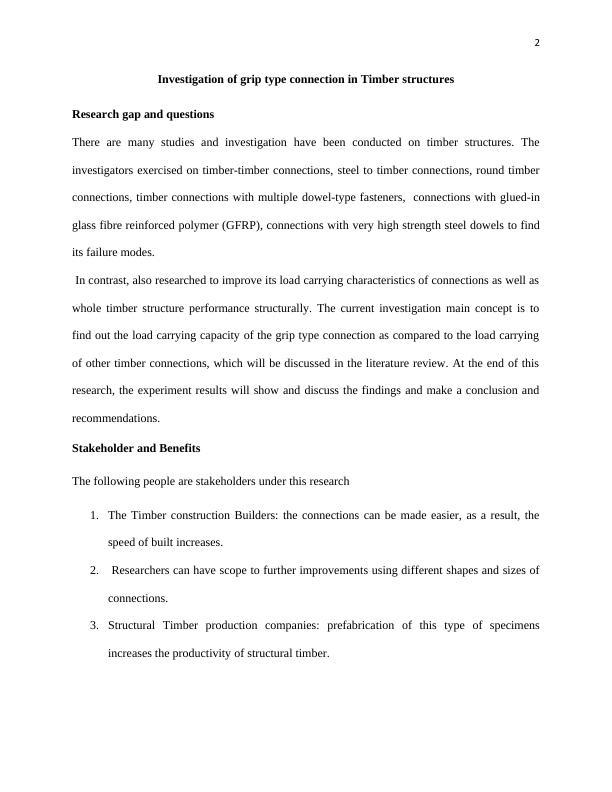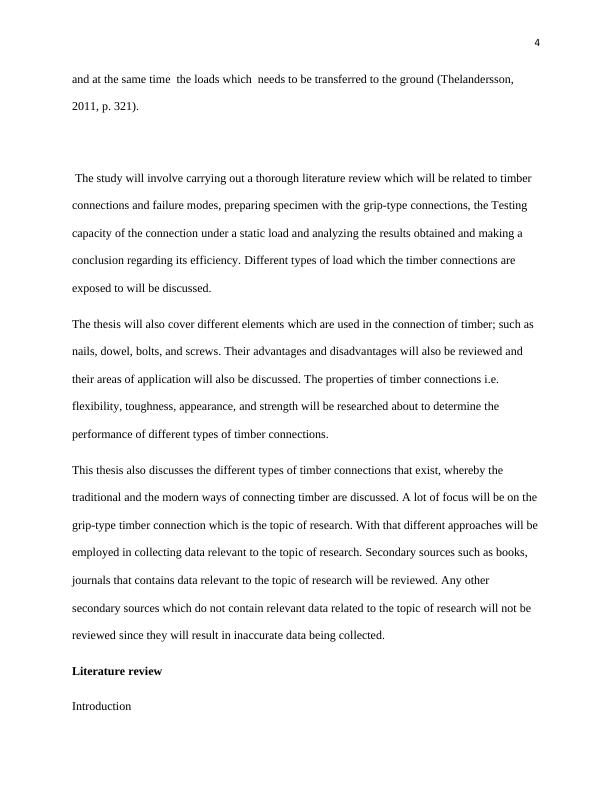Investigation of Grip Type Connection in Timber Structures
16 Pages2615 Words27 Views
Added on 2023-01-19
About This Document
This research paper explores the load carrying capacity of grip type connections in timber structures and compares it to other timber connections. It discusses the benefits for stakeholders and the scope of the study. The paper also covers different types of timber connections, forces in grip type connections, and traditional and modern timber connections.
Investigation of Grip Type Connection in Timber Structures
Added on 2023-01-19
ShareRelated Documents
End of preview
Want to access all the pages? Upload your documents or become a member.
Steel Tubular Beams Strengthened with CFRP: A Review
|9
|2137
|37
Can Bamboo Replace Steel and Timber in the Construction Industry?
|4
|626
|364
Corrosion and Deterioration of RC Structure
|29
|7341
|289
Behavior and Failure Mechanism of Modern and Ancient Arches
|11
|2810
|338
Design and Analysis of Leaf Spring
|7
|4150
|280




